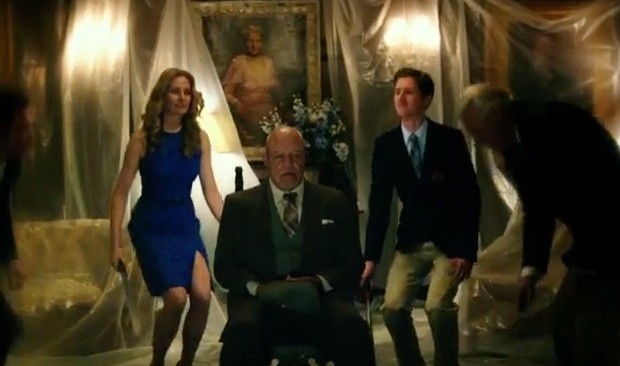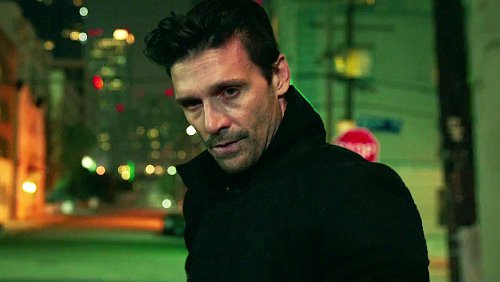
(Source)
Last year’s The Purge was one of the biggest unfulfilled promises in recent memory. “What if, for twelve hours, crime was legal?” is a premise you could tell new stories with for the rest of your life. Instead, we got a relatively by-the-numbers home invasion thriller, which could’ve just as easily hinged on “for twelve hours, phones don’t work.” The limited budget and resources meant that the full level of destruction was only implied, and while the movie itself was fine, it was hard not to feel ripped off. From the first trailers, The Purge: Anarchy made it clear that there would be no bait and switch this time. We were going to see a city’s worth of violence and murder.
(As a side note, I don’t feel like The Purge franchise’s premise is inherently more ridiculous than most summer blockbusters. It wouldn’t happen, but neither would zombies, transforming robots, or aliens from Krypton. It’s the kind of thing you have to accept for the movie to work, but they’re not trying to sell you on “this could happen” as much as “what if it did?”)
And indeed, The Purge: Anarchy, written and directed by Purge creator James DeMonaco, is stuffed to the seams with characters, violent setpieces, and musings on everything from gun control to religion in America to human nature. This is an improvement over the first one, and also part of the problem.

Captain America: The Winter Soldier‘s Frank Grillo portrays a Frank Castle-esque lead. (Source)
Anarchy follows three sets of characters as they meet and try to survive the night: Shane (Zach Gilford) and Liz (Kiele Sanchez), a couple whose car breaks down on the way out of town; Eva (Carmen Ejogo) and Cali (Zoe Soul), a single mother and daughter forced to flee when their building is attacked; and Leo (Frank Grillo), a divorcee on a single-minded mission to murder the man who killed his son in a drunk driving accident. Leo’s something of a Punisher or Rambo-Lite, skilled and taciturn, but when he decides to stop and rescue the others from various pursuers, he gets pulled into protecting them until he can dump them somewhere in exchange for a car to continue his mission. As the protagonist, Grillo performs well for the most part, glaring and shooting and looking badass, but he falls a little flat when he’s asked to show some genuine emotion towards the end.
They’re menaced by all sorts of depraved killers, from a wealthy man running a turret with a team of spec-ops goons (Jack Conley), to a crew of masked motorcycle punks led by a gaunt figure in a mask with “GOD” scratched into it (Keith Stanfield). Stanfield is probably the most striking figure in the film, with his swaying, puppetlike movements, and slow waves of his machete. It’s not quite the relentless terror of Michael Myers or Jason, but it’s deeply unsettling and effective.
The film does a better job than its predecessor of establishing just what a sham the Purge itself is. While it’s billed as one night for people to let off steam in order to be more productive citizens, it’s really about population control and the execution of poor and lower-middle class folks. It’s made clear that this kind of rage can’t just be switched on and off, through traps and elaborate plans that have clearly been set up days and weeks beforehand. A bit in the second act where a domestic dispute turns lethal also illustrates just how much this system has poisoned the minds and hearts of its participants.

(Source)
The main issue with The Purge: Anarchy is that it insists so thoroughly upon being taken as a political and philosophical statement that we have to engage it as one, and not to its benefit. The themes of population control, wealth vs. poverty, and a devotion to the vague spectre of “America” are all more present here, and there’s a number of scenes that feel especially resonant. A character’s tirade about “taking what’s his” is eerily reminiscent of Elliott Rodger’s video manifesto, and there’s a discussion of the revenge murder of a crooked Wall Street businessman. There are plenty of illustrations of disgusting savagery, and the various justifications of it.
But in the same way that Truffaut said you can’t make an anti-war film, it’s hard to really take DeMonaco as seriously as he’d like, because it still often falls into the excesses of any other action movie. While it’s exhilarating to watch Leo dispatch black-clad stormtroopers or One-Percenters, we’re still cheering for a man who’s using his skill and might to murder his enemies. A subplot with an anti-Purge rebellion is intriguing, but it’s used as a deus ex machina, and their tactics still boil down to “shoot a lot of people, just not the people who usually get shot.” It would’ve been more interesting to present a more nuanced view of how people cope with the Purge, both violently and non-violently, but the film’s DNA is still that of a horror movie. At the end of the day, The Purge: Anarchy is trying to scare you, both with jumps and with meditations on human nature.
After The Purge, people had a lot of questions about what the great system was like, and how a variety of people outside of this one suburban subdivision dealt with it. The Purge: Anarchy answers that question exhaustively. It also muses on morality and oppression in ways beyond those it’s equipped to handle. I don’t know if another sequel is planned, although I have to imagine there will be one if Anarchy performs well at the box office. It might be time to let another writer or director take a crack at the premise. DeMonaco seems to have said all he has to say here, and then some.
The Purge: Anarchy is out in theaters nationwide.
